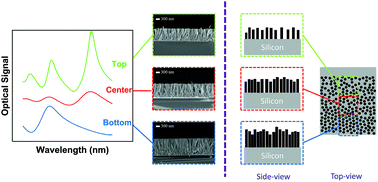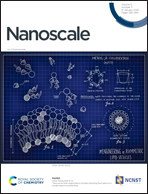Rapid assessment of nanomaterial homogeneity reveals crosswise structural gradients in zinc-oxide nanowire arrays
Abstract
In an effort to scale-up nanomaterial growth over large surface areas, we aim to effectively study the structural non-homogeneities within the arrays of zinc oxide nanowires (ZnO-NWs). The assessment of the lateral gradient of the nanowires’ characteristics is presented including their height and surface density. To this end, spectroscopic ellipsometry and the rather recently reported technique of spectral domain attenuated reflectometry are used as two fast, simple and non-invasive characterization methods with further capabilities of scanning over the sample surface. Simple models are proposed by considering ZnO-NWs as the equivalent of thin stratified layers based on the effective medium approach. The methodology not only reveals the presence of gradients, but also enables quantitative analysis for all the samples grown using the hydrothermal method with different growth times ranging from 0.5 h up to 4 h. The gradients are confirmed using scanning electron microscopy (SEM) observations taken as a reference. The results also suggest that the sample orientation during the growth influences the NW growth besides the other parameters already known to affect the growth mechanisms.



 Please wait while we load your content...
Please wait while we load your content...